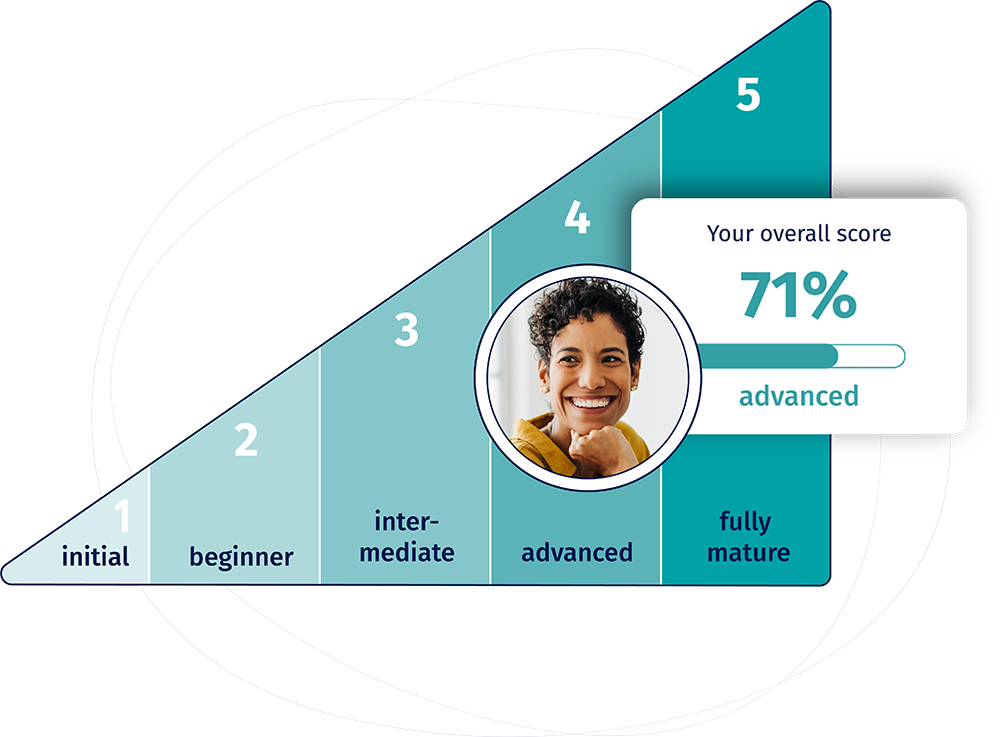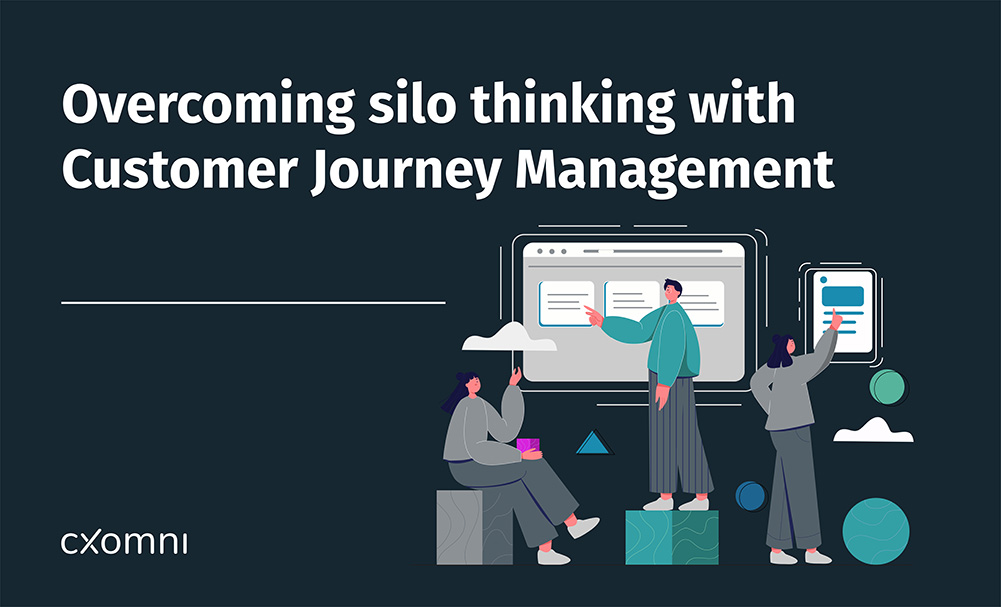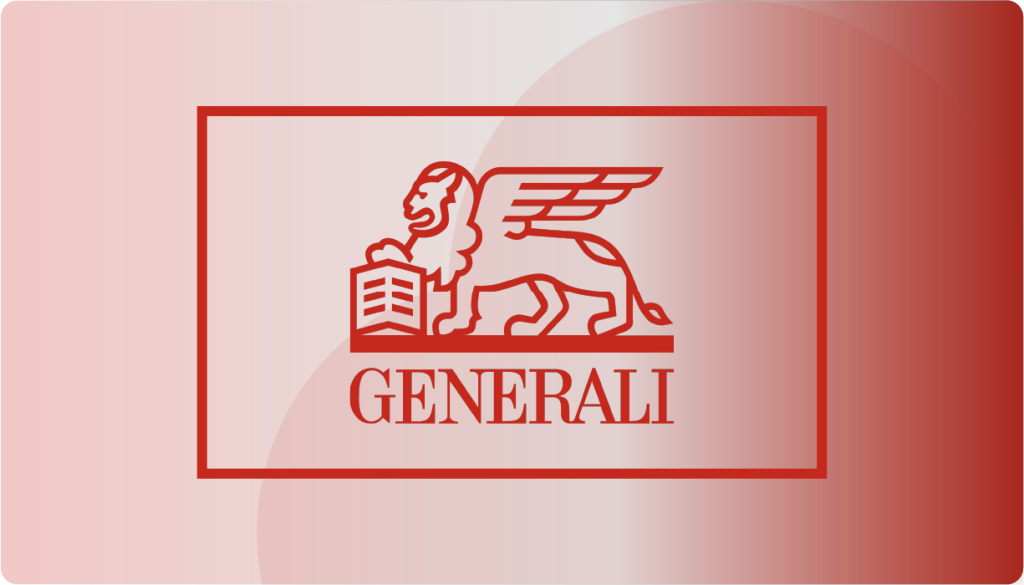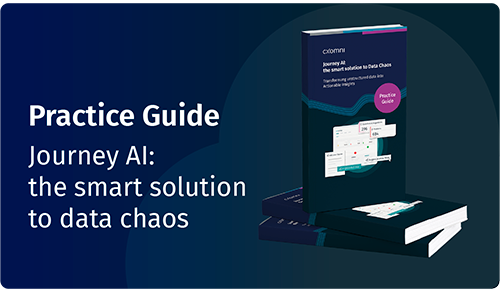The customer or user journey is becoming increasingly important in UX design. UX teams analyze the user’s pains and gains in the context of the journey so that they can use these insights for improving the usability of touchpoints. To ensure that this workflow works across teams, Journey Management Frameworks help along. But how does this approach work? Are frameworks just boring standardization tools or do they increase efficiency? Since there is no “one size fits all” standard for framework projects, we discussed these questions with the participants of the UX Maturity Barcamps organized by our partner, the Experience Leadership Club. I have summarized the six most important practical tips for you in this blog post.
But let’s start with the typical challenges of working with a Journey Management Framework:





Organizations usually fail due to the lack of a "common language".
This means that communication between departments which are responsible for the same journey is a challenge: e.g. the information relevant to sales at a certain touchpoint is completely different from the information relevant to product managers. Sales may also have different goals (e.g., upselling) than product development (e.g. usability of a touchpoint). Normally, both departments also have a different understanding of the term “touchpoint”. As a result, knowledge about customer processes can not easily be shared across departments, what makes it difficult to take action when it comes to optimizing the customer journey.
The risks are obvious: the full potential for cost savings or additional revenue is not being realized.
Journey Management Frameworks: the advantages for UX projects
- Journey Management Frameworks ensure a consistently high quality standard across all user journeys.
- Cross-country and cross-product line comparability allows that learnings can be transferred from one journey to another for e.g. reducing sources of error.
- Journey Management Frameworks combine individual touchpoints with the relevant context and the respective end-to-end experience.
- Frameworks provide a structured approach for identifying and solving UX problems. Clear guidelines and methods allow teams to tackle challenges and make improvements.
- Working with a framework ensures that users have a consistent experience across different channels and touchpoints. This helps to avoid inconsistencies during customer interactions with a product or service.
- The common understanding of framework conditions and goals enables collaboration and information exchange between different teams.
Journey Management Frameworks provide structured guidelines and processes that enable UX teams to define insights and ensure a positive user experience across different journeys and touchpoints.
Playbook: Introduction of a holistic Journey Management Framework
How to manage CX projects holistically!
Best practices for UX projects
However, Journey Management Frameworks are not a silver bullet. Once implemented, everything takes care of itself? No way. A UX/Journey Management Framework is more like a guardrail. It ensures that everyone involved has enough freedom to change lanes or choose their own pace. At the same time, the framework ensures that everyone is moving in the same direction and that no one gets off the road.
Here are the 6 most important tips for working with Journey Management Frameworks in UX Design.
- Practicality before perfection; It’s not about mapping the perfect world. Companies should create realistic but applicable frameworks that meet the needs of users within their own organization instead of getting lost in non-relevant details.
- Keep an eye on business impact: Discussions about aspects that do not have a direct business impact provide no benefit. You can, of course, spend months discussing whether a phase should be called the “purchase phase” or the “conversion phase” – but this will be irrelevant for the success of your company. The focus should be on topics that really make a difference for your organization and your customers.
- The Customer Journey Framework is a tool, not a dogma: A Customer Journey Framework is first and foremost a structural aid. Use it as a flexible tool that can be adapted to the specific requirements and changes of your company.
- Use the language of your business: External communication to stakeholders/sponsors should be in business language, not design language. Diplomacy plays a decisive role here. Focus on clear and concise messages that reflect the business benefit.
- Don’t forget your users: Since they have to work with the journey maps later, the practicality of the framework should reflect the end user’s perspective.
- Ongoing user involvement: Involve your end users from the beginning. This ensures that journey designs are optimally adapted to their needs, what minimizes potential cost increases resulting from later adjustments.
Conclusion
Journey Management Frameworks provide a structured approach that help organizations to better manage UX challenges and create positive interactions across all phases of a user journey. By better understanding and responding to their users’ needs, companies can reduce costs and increase revenue. But remember: flexibility and adaptability are key. By incorporating the above tips, UX teams can ensure that their user journeys are not only effective, but also sustainable. Practicality, a focus on business impact, and ongoing user engagement are key components of successful Journey Management initiatives.
About the author

Christian Peksen is Sales Manager at cxomni. He studied Psychology in Vienna and Human Factors & Engineering Psychology at the Technical University of Twente and was previously Head of Consulting at Schuhfried GmbH. Christian’s mission is to help companies succeed in the digital age through effective and sustainable Customer Journey Management. In his role he focuses on understanding the individual needs of customers, guiding them through the testing process and, together with the customer success team, enabling a seamless onboarding experience.







